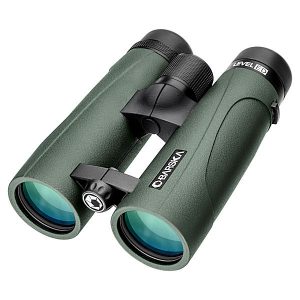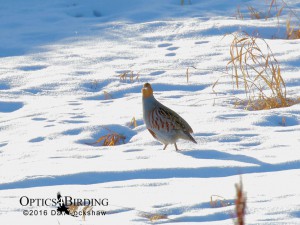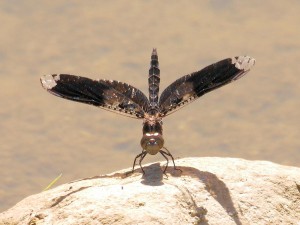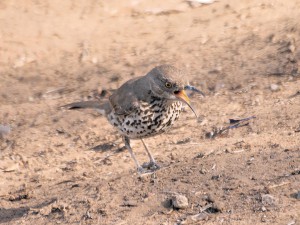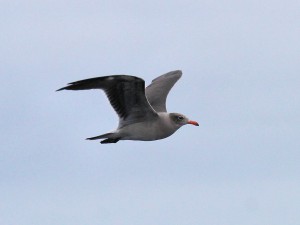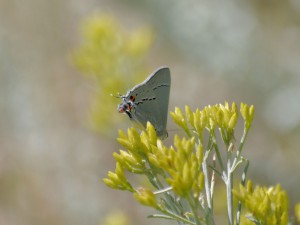In this article, we’ll be covering best practices for using binoculars. Every birder has binoculars, but not every birder knows or understands how to get the best results from them: how to set them up, how to hold them, and how to wear them for optimal performance. Continue reading
Category Archives: Binoculars
Barska Level ED Open Bridge
Goodbye Eagle Optics Rangers. Hello Barska Level ED
One of the most popular low-cost binocular series in the history of Optics4Birding has been the Eagle Optics Rangers. The Ranger went through several incarnations and improved each time. So, when Eagle Optics closed, we were disappointed to lose the Rangers, and we started looking for a good replacement. In January 2018, we found the Barska Level ED Open Bridge binoculars. Even without a head-to-head comparison, we knew had found our replacement. So, we arranged an evaluation piece from Barska to try them out. Read on to find out why we feel so strongly about the Barska Level ED binoculars. Continue reading
Winter Birds of Calgary Canada
I took a very brief trip (5 days) to see the winter birds of Calgary Canada. I did this at the end of January and beginning of February. My primary reason for traveling to this area was to look for Snowy and Hawk Owls. In the continental United States these two owls are not very common. Small numbers usually do show up though most years in the northern states. Hawk Owl would be the most uncommon of these two species. Along with the owls, the mammals and winter birding this far north promised to offer other interesting species. These would include several that I would not find in Southern California. There would also be some that may not be very common in the lower 48 states at all.
Grey Partridges
The Grey Partridges are a pleasure to find. There were several coveys in the area. These were new to me. They are fairly common this far north although I had never seen one. I have been singing 🎼♪ “and a partridge in a pear tree” ♫ every Christmas since I was a kid. It was a pleasure to actually have a picture in my mind of what they look like. Seeing them in action was a pleasure. They seemed quite similar to our quail being in groups running around on the ground (missed any in pear trees!). I was fortunate enough to have had the opportunity to bring a pair of Zeiss Victory SF 10×42 Binoculars with me for review. For now, all I will say is “WOW, The views through these binoculars are incredible”. Continue reading
Filigree Skimmer 3rd record in CA
When the dog days of summer become the birding doldrums, some birders turn to other flying creatures. The most accessible of these are butterflies, dragonflies, and damselflies, all of which require binoculars with excellent close focus. It was unusual recently that a birder birding San Timoteo Creek in Redlands, Riverside County, CA discovered a pair of Filigree Skimmer dragonflies (Pseudoleon superbus). As the species has only recorded twice before in California, we went to take a look. Continue reading
Gray Thrasher: 1st US Record
Gray Thrasher is a non-migratory endemic to Baja California, so when Sunday afternoon on August 2, 2015 was interrupted with a report of the first US occurrence in San Diego, we had to make the 75 mile drive and take a look.
Finding the Gray Thrasher
The Gray Thrasher was found by John Bruin, Lisa Ruby, and Terry Hurst at the southwest end of Famosa Slough. This area has had its share of rarities, including Bar-tailed Godwit. Once we arrived and parked, we quickly found a couple of dozen birders standing around. Others were searching for the bird in other parts of the area. We learned where it had been seen (about 45 minutes before our arrival) and which way it went. Since it obviously wasn’t where everyone was standing, we decided to look around. Just after our fourth pass by a large lemonade berry bush, someone spotted the Gray Thrasher deep in the foliage. Birders surrounded the bush looking for a better angle. All of a sudden, the thrasher decided it was hungry and came out onto the slope to forage in the leaves and twigs only about 15 feet away from us. That was too close for my Kowa TSN-884, but just right for binoculars.
Continue reading
Fireworks: 4th of July 2015
Happy 4th of July 2015
This year we stayed close to home to watch the 4th of July 2015 fireworks. Walking to the top of the hill that is next to our local high school we were able to see several fireworks displays from one place. The beauty of our local 2015 firework shows were quite impressive and certainly worth an attempt at taking nice photos of. Since I had tried taking photos of the fireworks last year I figured my 2015 firework photos might be a bit better. As it turns out they are!
How to Take Fireworks Photos
So for you guys out there that want to take photos of the fireworks here is what I did. Last year I shot the fireworks at ISO 200. This year I brought that down to ISO 100. Last year I shot the photos at f/8. This year I shot my photos at f/11 to get better depth of field. Both years I shot using a bulb setting so I could vary the shutter time. Last year the photos we taken mostly from about 3 to 6 seconds exposure time. This year most of my shots were taken with a 6-10 second exposure time.
Our 4th of July Greeting
Hope you enjoy the pictures and that this year will continue to bring many outdoor viewing opportunities. A good pair of binoculars and or spotting scope from Optics4Birding makes the viewing experiences of life more enjoyable. Happy 4th of July to you from all the Optics4Birding staff.
Happy birthday United States. We at Optics4Birding have great hopes for both our people and nature. Both are tied together. In order for us to stay healthy, the world of nature also need to stay healthy. Getting outdoors to see the fireworks is a good start for the remainder of the year.
Click on the photo to enlarge it and to page through other firework photos.
Zeiss Victory SF Binoculars
Zeiss Victory SF Binoculars
Some of you may already have heard about the Victory SF binoculars, the new high-end binocular from Zeiss. Zeiss added a new binocular to the Victory line: the SF. Victory SF binoculars are a completely re-imagined roof prism design. Zeiss now says that Victory SFs will be available for purchase in January, 2015.
Conveniently, we have first-hand experience with this binocular. I participated in the official Zeiss Victory SF Experience press event in Europe in June, 2014 and got to bird with a pre-production Victory SF for a week (For a travelogue of the press event birding, see Zeiss Victory SF Experience Tour, Part 1, Part 2, Part 3, Part 4). It’s a dirty job, but someone had to do it, so I happily took one for the team! We also had a pre-production Victory SF model in the store for a week this past August. Even though we haven’t seen a production model Victory SF, we can tell you already that it’s a spectacular nature viewing binocular. Continue reading
A Fall Pelagic Trip Out of Dana Point
I recently took the fall pelagic birding trip out of Dana Point Harbor. Recent sightings of a Red-billed Tropicbird in the Santa Barbara Channel gave us hope. Hurricane systems south of us off the coast of Baja suggested that the fall pelagic might produce great birds. There had been greater than usual numbers of Craveri’s Murrelets in the channel. Many people were on the boat specifically looking for that species. Plus, September is the peak of Blue Whale occurrence in the channel. We knew beforehand that cetaceans rather than birds might dominate this trip. In the end, the trip met all of those expectations. Well, except for the tropicbird… Rats! Continue reading
Hairstreak Butterflies
Hairstreaks high-jacked us on a recent birding trip to Big Bear in the San Bernardino Mountains! Hairstreak butterflies are found in a variety of habitats here in southern California.
Gray Hairstreaks
On this trip, we found two species: the common Gray Hairstreak (Strymon melinus) and the rarer Great Purple Hairstreak (Atlides halesus). Gray Hairstreaks are one of the most widespread butterflies in North America, native to all lower 48 states, southern Canada and northern Mexico. Like most hairstreaks, the Gray tends to fold its wings when landing. Recognize this butterfly by the light gray coloration, prominent orange rectangle on the underside of the hind wing, and a line of dark spots on both fore and hind wings.
Little hair-like extensions of the hind wing rear margins form the “hairs” that give these butterflies their name. On Gray Hairstreaks, the hair is fairly prominent; it is much less so on some other members of the family, like the Elfins or the Hedgerow Hairstreak. Continue reading
OC NABA Butterfly Counts, 2014
The Orange County chapter of the North American Butterfly Association (OC NABA) held its annual butterfly counts this weekend. Counts took place in Thomas Riley Regional Park and O’Neill Regional Park. It was my privilege to participate in the Riley count and to lead the O’Neill count. We had a pretty much ideal day for them, warm and clear without being beastly hot, though a little more moisture to bring on a bloom of more flowers would have been helpful.
As it was, the diversity of butterfly species was a bit on the low side, while the numbers of some species, notably Checkered Whites and Marine Blues were fairly impressive. We had 35 Marine Blues on the Holy Jim Canyon section of the O’Neill count alone, mostly clustering around wet mud puddles. They were difficult to count accurately since they were always moving, and you had to be careful that you didn’t miss something different hiding amongst them. We had a handful of duskywing butterflies, mostly Funereal Duskywings (photo). Many of these were freshly emergent, so the subtle markings in the upper wings and the white trailing edge of the hind wings were particularly bright and well-defined. Continue reading

